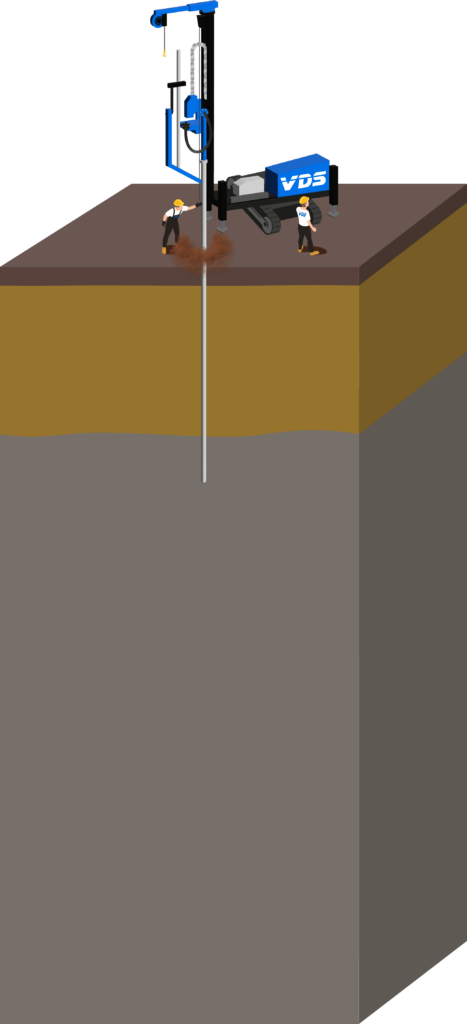Soil Survey


What is soil testing?
Soil testing is the process of collecting and analyzing soil samples to obtain information about the physical, chemical and biological properties of the soil.
This is essential for assessing the suitability of soil for various uses, such as agriculture, construction and infrastructure.
Soil testing can also be used to obtain information on the presence of contaminants in the soil and to determine what measures are needed to remove them.
Our technique allows us to take samples from a soil up to 300 meters deep.
CPT
SPT


At VDS, we regularly invest in knowledge and technology.
We work with modern machinery and with our enthusiastic team of driven professionals, we can quickly and competently install your well in almost any situation.

Benefits of soil testing
There are several advantages to conducting soil testing.
First, it can help identify suitable sites for various uses, such as agriculture or construction.
Soil testing can also help prevent soil contamination and determine appropriate measures to reduce or remove it.
Another benefit of soil testing is that it can help assess the health of soil and identify any problems that may lead to a decline in soil quality.
This can help determine appropriate measures to improve soil quality and increase the productivity of agricultural land.
Soil testing can also help predict the effects of human activities on soil and the environment.
By conducting soil testing, problems can be identified before they become detrimental to human and environmental health.
In short, soil testing is an essential process for assessing the suitability of soil for various uses and for identifying problems that may lead to a decline in soil quality.
With soil testing, suitable sites can be identified and appropriate measures taken to improve soil quality and protect human and environmental health.
